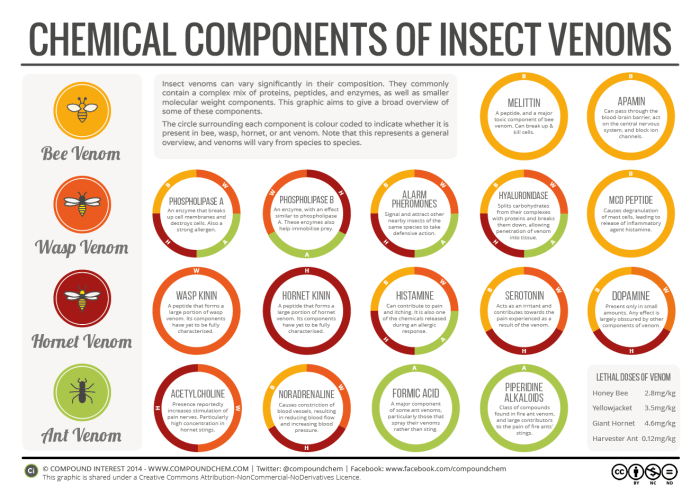
Spiders are the most numerous venomous animals on the planet; the number of species predicted to be in existence, 150,000, is thought to be greater than the numbers of all other venomous creatures combined. Almost all spiders, with only a few exceptions, produce venom, which serves the primary purpose of immobilising their prey. However, the content of this venom can vary wildly from species to species, and the majority are not harmful to humans. This graphic takes a look at some of the different possible components, and their roles in venoms.









